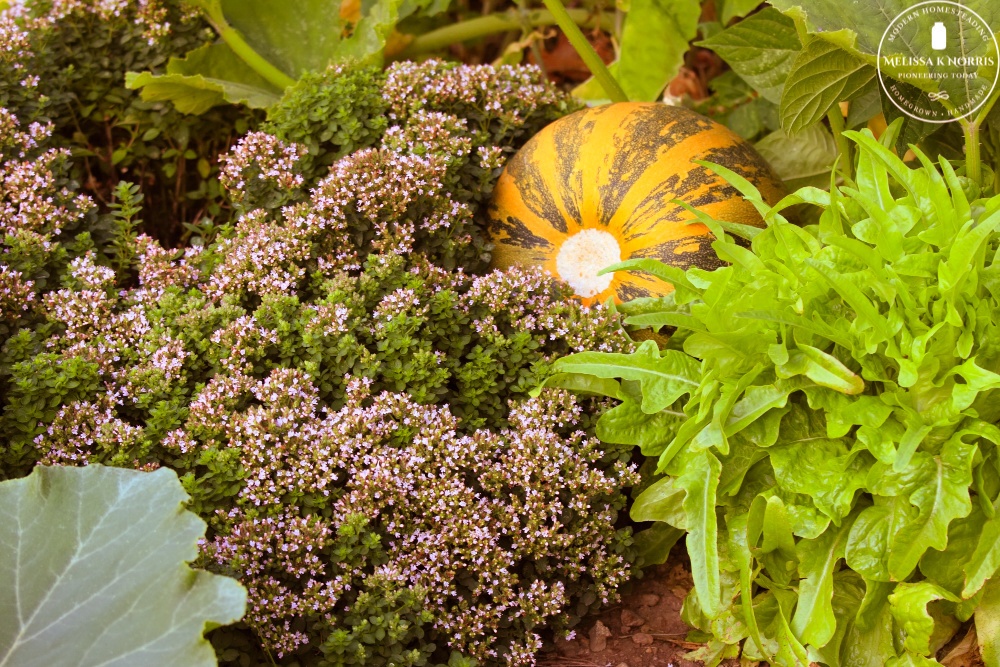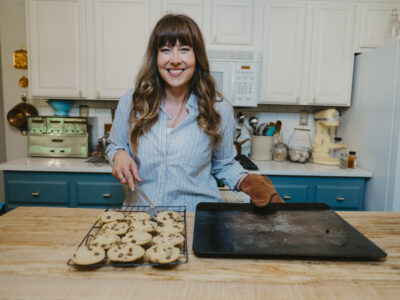Learn the 10 things most organic gardeners forget about to help you grow more food in the space you have, even if it’s not ideal full sun!
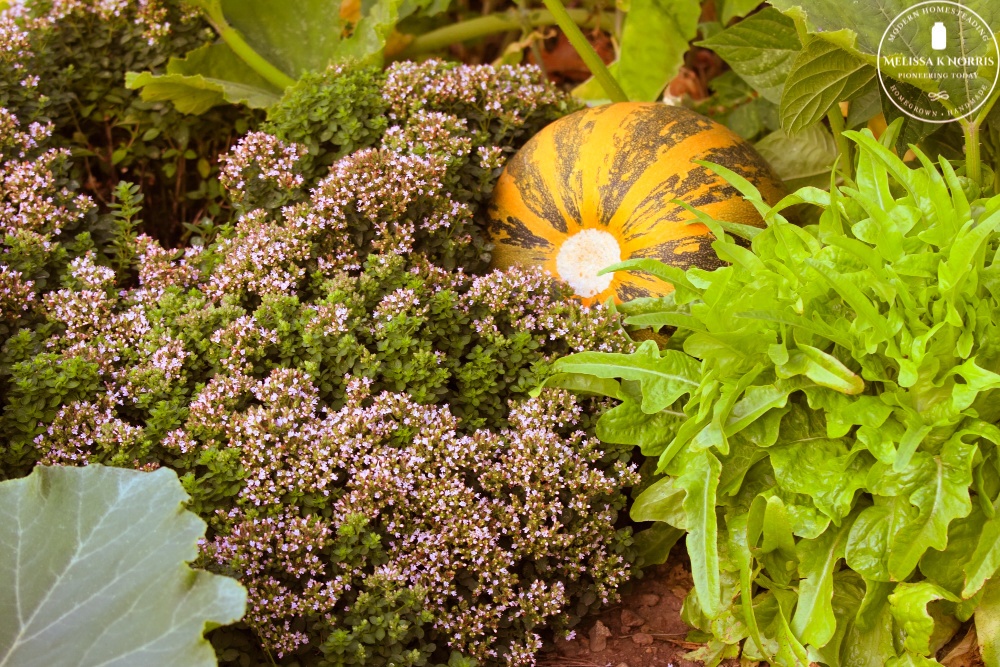
Nicky and Dave Schauder are passionate about helping families grow their own food by using permaculture principals to maximize production in small spaces.
With everything that is happening with COVID-19, restrictions, and problems with the food supply, I feel that more and more people are turning back to gardening and growing some of their own food. It may be something that they’ve wanted to do and had been in the plans for the future, but that future is now. It came sooner than many anticipated.
I know a lot of my audience has the need to grow their own food this year, but they don’t have a really large space so they feel they can’t grow much. With Nicky and Dave living in a very urban environment using the concept of permaculture and a food forest, they have the first-hand experience in growing in a smaller urban space.
Listen in below to the full podcast, Episode #260 10 Things Most Organic Gardeners Forget About , of the Pioneering Today Podcast, where we don’t just inspire you, but give you the clear steps to create the homegrown garden, pantry, kitchen, and life you want for your family and homestead.
Multiply the Harvest
Melissa: Welcome guys. Could you tell us a little bit about your growing space and how you do some of your growing plots?
Nicky: We grow in 1/40th of an acre in a tiny townhouse flanked by other townhouses. At the start, we grew 90 pounds of produce a year and that slowly crept up to now 300+ pounds a year, which translates to 25% of our fruits and vegetables. The way that we did this is something that Dave calls multipliers. He’ll talk more about that.
Dave: We’re applying permaculture in our small yard to maximize efficiency. There are things that you can do to easily multiply the harvest that you get. We’re doing four-season gardening where we rotate three separate annual crops through the same space. We’re also growing perennials in that same space. So we’re doing a rich diverse polyculture of both perennial and annual crops.
We have a pretty strict HOA. The first year I was doing experiments with pumpkins, which probably wasn’t the greatest to do, now we’re a lot more concerned with the aesthetic. We still grow a lot of edibles in the front yard, but we have to keep the rampant foliage down.
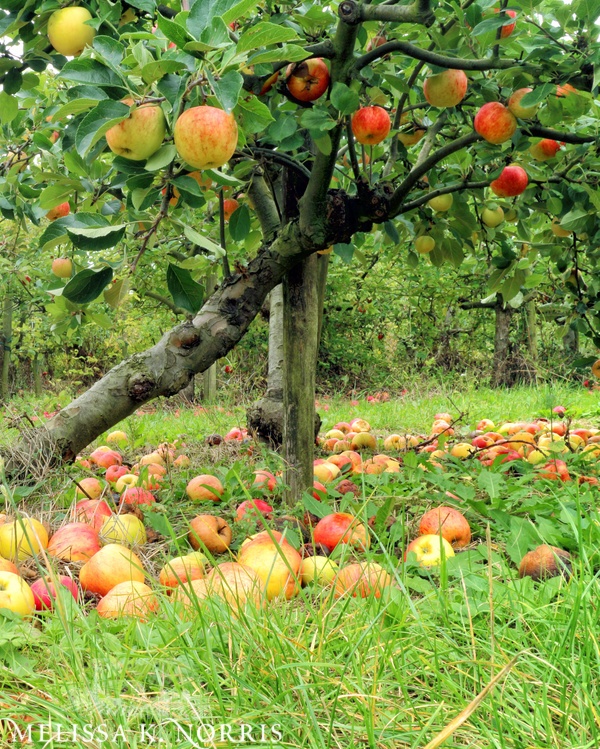
We do most of our gardening in our backyard. We put a fence around our backyard, so it’s maybe a total of 20 by 25 square feet. We’ve made keyhole beds along the fence. We do four-season gardening. We also have trellising using a cattle panel fence bent over a hoop and we grow a lot of vertical crops like melons, pole beans, and things like that vertically. It takes up a lot less horizontal space.
Nicky: Plus the sides are espaliered which means that the fruit trees are trained against the fence in a shoulder to shoulder fashion where things are lined up like an old English garden.
Dave: A lot of people don’t realize that you can utilize dwarf fruit trees. In our backyard, we have 10 fruit trees. As long as you use dwarf trees and keep them pruned to about six to eight feet tall and you can espalier them to use even less space. You can actually get a lot in a small yard.
Melissa: I don’t even think I can comprehend a 40th of an acre. So you said it’s 20 by 25 feet, that’s primarily in your backyard and is the majority of the growing space you have. For the keyhole beds you mentioned, are they raised beds or in-ground or a combination of both?
Dave: They’re raised beds. They’re made out of wood but we’re in the process of converting that over to brick.
Melissa: What is your climate like? When is your average first frost in the fall and last frost in the spring, your gardening zone, and your overall climate there?
Nicky: We are USDA 7B
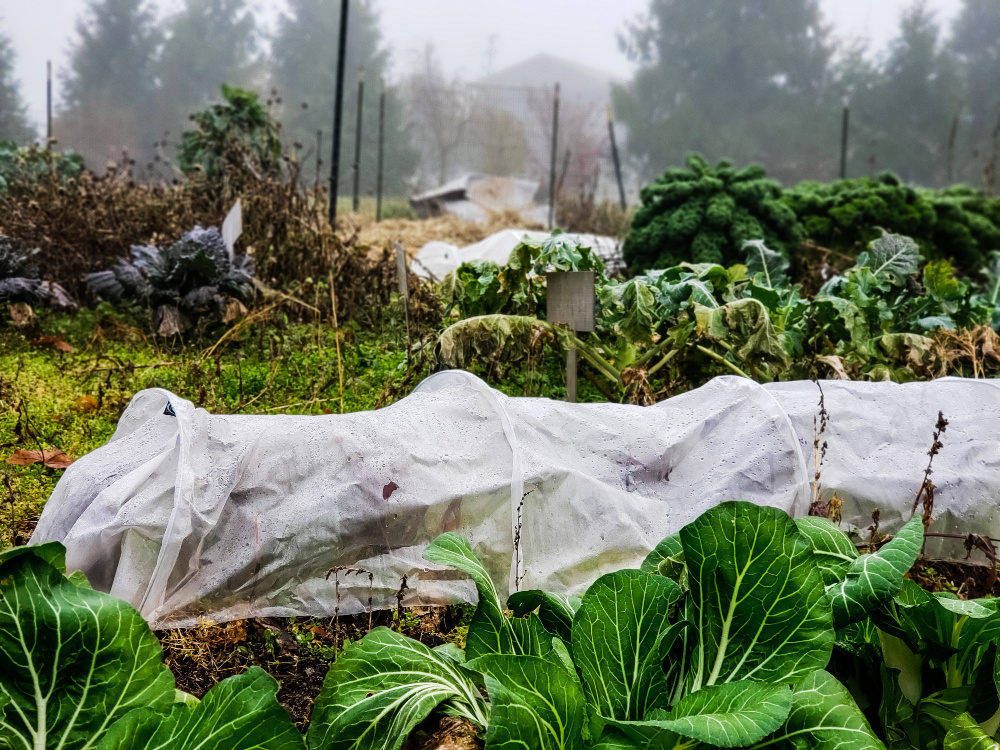
Dave: We start to get light frosts maybe late October and heavy frosts at the beginning of December. It’s temperate but it does warm up pretty quickly in the spring. Generally, we get temperatures in the winter in the twenties and teens. We can grow some kind of subtropical trees here. I have some fig trees in the front yard.
Extend the Season
Nicky: We try to push the edges too. Because our summers are very humid and hot, we do a lot of tropical-like ginger turmeric. We try to do those kinds of cash crops because they’re expensive to buy. They’re very healthy and we use them a lot for herbals.
For the cold season, we do hoops with agribon row covers at the beginning of the fall season. That’s the first layer. When the snow comes in we cover that with a second layer of plastic, which we reuse every year. That helps us grow carrots through the winter.
Dave: The cool thing about the low tunnels is that it doesn’t provide a ton of protection, but it provides maybe 10 to 15 degrees. So you can grow a lot of things that can tolerate a light frost and are somewhat hardy. Even if temperatures get down into the low tens they pretty much will stay alive. There’s a lot of things like lettuce that we can grow through the winter.
Nicky: We’re always trying to experiment as well with the varieties that work in our climate.
Melissa: I too like to push the envelope and test to see if something will work. I’m gardening zone 7A and you’re 7B. It fascinating because those gardening zones are great for knowing your perennial’s ability to survive the low temps in winter. But as far as planting dates and all of that it’s so vast and different. I find that I am always sharing with new gardeners how the gardening zone isn’t necessarily what you go buy when planting a vegetable garden.
I find in my high tunnel/hoop house that it’s generally 5 degrees warmer than the outside in the coldest part of winter. That’s with one layer of protection. I find that as long as I already have my lettuce somewhat established by the first part of December that it’ll grow slowly through February. At the end of February is when things start to warm up just a little bit. Do you notice that too?
Know Your Particular Micro-climate
Nicky: Yes, we definitely do. When the light comes then everything starts bolting and you have to be fast and harvest them. That’s when we find that varieties really matter. For example, which lettuce is the slow bolting one? The ones in our front yard, which our HOA don’t recognize, are usually the ones to bolt first. The ones in the backyard don’t until later.
Dave: Our backyard is facing north so we probably get six months of shade and that means that the temperatures back there warms up much slower than the front yard so we just have to plan that accordingly. It’s a weird micro-climate where it’s five to 10 degrees cooler in the backyard. The perennials don’t care because they have all these reserves stored up in their root systems. For annual crops it’s almost like an offset growing season.
Melissa: It’s amazing when you evaluate your property and track these things. Ten degrees doesn’t seem like that much, but it can be a really big difference to crops. I noticed the same thing and that ten-degree mark can make a difference on whether a plant is thriving or if it’s struggling.
I love that you’re using the north part of your yard and still able to grow quite a bit of food. What are some of the crops that you have found do the best in those cooler or shady areas yet still give you a pretty good harvest?
Nicky: We grow:
- Herbs
- Rhubarb
- Stinging Nettle – great companion plant to tomatoes
- Tomatoes
- Marigolds
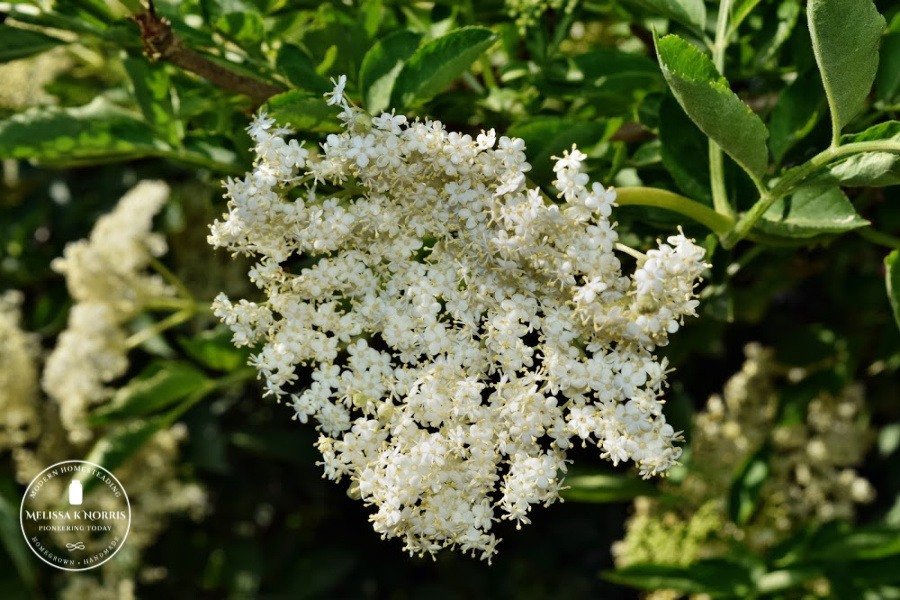
We do grow tomatoes there. That’s one of the things about permaculture…really studying your space and looking for those micro-climates. Even withing that micro-climate of cooler space, there are little pockets that are warmer than others. That’s where we plug in the tomatoes.
Dave: It was an experimental thing in the first years and we made some mistakes. Like we put in some root crops and discovered that those don’t really grow well without a lot of sun. Be we did find that a lot of these perennials don’t need as much light. We have a bunch of different berry crops in back. We have:
- Goumi berry
- Gooseberry
- Elderberry
- Strawberries
- Blackberries
You might not get as much harvest but you still get enough that it’s worth it. In terms of fruit trees, we try to pick ones that grow in the understory. Historically they might’ve grown in a forest underneath taller trees so they’re used to not getting as much sunlight. One of our big producers is Paw Paw trees.
Melissa: I just planted some Paw Paw trees here on my property with some help from Joe from Raintree Nursery . I have two different varieties so they’re cross-pollinating.
Nicky: We have two as well and they yield pounds of fruit. Historically they say that when the temperatures were more tropical or hotter. It was one of those tropical fruits that got stuck here. Somehow they acclimated here.
You Need Pollinators
Dave: it’s one of these ancient trees that doesn’t attract your typical pollinators. It’s actually pollinated by flies.
Melissa: Yeah, that’s what he was telling me. It’s planted out where we have some alders, maples and some cottonwoods so it’s in that understory but not underneath the evergreens. He was saying that it’s probably good that it’s a bit further from the house because of the fact that it attracts flies and the blossoms don’t always have a pleasant scent to them because they are attracting the flies. Do you notice that at all?
Nicky: We haven’t noticed that on our varieties. There were years that we didn’t hand pollinate them and they didn’t give us as much fruit so we’ve been hand pollinating them just to be sure.
Melissa: I have hand pollinated some of our other fruit before I brought in mason bees once I had a lot more pollinator plants than when we first moved onto our property. I got mason bees because we weren’t ready to do honeybees.
Nicky: That’s really inspirational about bringing in the mason bees and how having those pollinator plants just changed everything for you. Hopefully that will get more people growing more flowers.
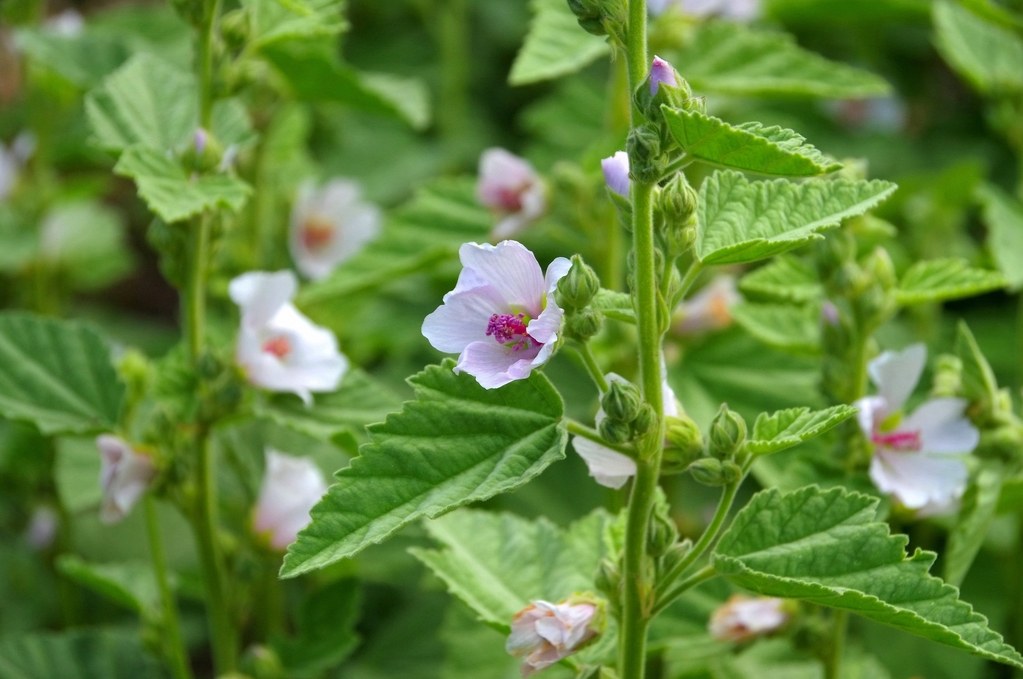
What is Permaculture?
Melissa: We’ve been talking a lot about permaculture and I know it’s something that you really employ. Are permaculture and organic gardening the same thing or what is the difference or how do they work together? Could you expound and explain how you’ve used permaculture in your space and what it’s meant for your production?
Dave: Permaculture is a design system that was born in Australia in the ’70s when David Holmgren and his thesis advisor, Bill Mollison coined the word from the concept of permanent agriculture. That was 40 or 50 years ago so it’s changed a lot. It’s spread around the world and is starting to become more popular. In general, permaculture is looking at the functional relationships that occur naturally in your garden or your home or community. As a permaculture designer, you’re looking at more of the ecology of the system. In a traditional mono-crop environment you’re growing things and not paying attention to the natural environment but in permaculture, you’re looking at the relationships that are present and the nature between the organisms in the soil and the plants, what grows well together and the different spaces they occupy.
You’re trying to maximize that so that you’re piggybacking off nature so that you’re putting less effort into it and getting a lot of benefit from that. There are a lot of things that you would observe in your yard. These things would be like how the sun moves through your property, how all the energy moves through your property. How water flows through, the different micro-climates that exist there, the winds, and things like that. But you’re also looking at the plant life. Especially look at the soil. There’s a lot of functional relationships between the organisms in the soil that can really affect the health of your plants.
Nicky: As a result permaculture systems aim to be inherently no waste. They are cyclical, spiral systems that get better with time…each turn of the season. And there’s a succession that makes the growth more efficient, more stable, more diverse, more abundant. A big part of permaculture is just to observe the natural patterns, those cyclical patterns. Think about nature’s way and everything is renewed or better each year in your garden.
Melissa: I love how permaculture has a basis in building upon those cycles and every year things become stronger and usually more improved and healthier. Really observing and instead of working against nature, trying to work with it. I’ve even shared a lot on picking the right varieties and plants that grow well in your particular climate…don’t try to pick things that you’re going to struggle with.
Start Small & Expect Change
Beyond the observation, what are other steps for implementing permaculture?
Dave: We feel that the first thing is to understand that it’s an ongoing spiral of improving your garden. You’re not going to get it perfect the first time around. So in that first cycle through, we recommend keeping it simple and focusing on a single season of growing your garden, whether that’s a few containers on a deck or a raised bed or another garden area. So you’re just trying to focus on starting to integrate different systems in your garden.
What we recommend is trying to get a more diverse set of annual crops. I think there are seven main plant families that annuals come from. So try to diversify the things that you’re growing in your raised beds so that you try to get at least one of each of those plant families in each of the raised beds. That’s from the annual side. For perennials, in the first go-round, maybe pick a few perennial elements that will last longer than a few years to start putting in. Maybe you put in a berry bush, maybe you put in a fruit tree or some pollinator flowers that will improve your tomato harvest.
You don’t try to go crazy initially because that can be quite overwhelming. A lot of people will try to design everything for they’re quarter-acre backyard and it’ll become a bit too overwhelming to actually implement all that. What’s useful is that if you start out small – you might have a plan for what you eventually want it to look like – you can see what does and doesn’t work. Continuously tweak things as you continue to learn.
Melissa: We’ve been on our property since 2006 so for 14 years and I’m still tweaking things. So I think that’s such good advice to not try and do everything all at once and to know that it’s going to evolve and change even years out. And just expect that as part of the process is key.
Dave: One of the big things with permaculture is the idea of stacking functions. That’s where you have functional elements that help each other. For example, you have a deep tap-rooted plant that dredges up lots of nutrients that the plans you’re growing around it will be able to utilize in order to grow larger. But it’s also providing some kind of edible crop.
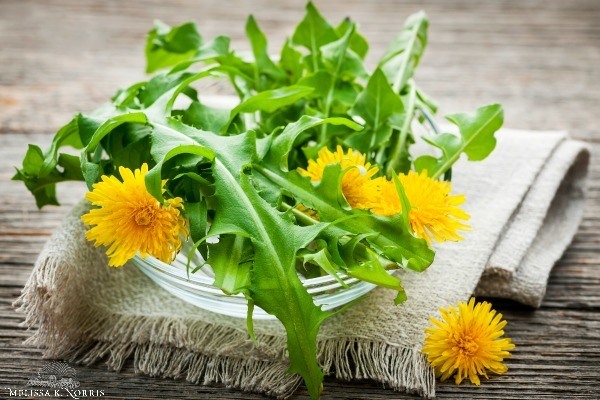
The mistake that people who are new to permaculture make is that they’re treating it like a puzzle trying to get as many functions stacked right at the beginning. What we’ve discovered through our experience is that as you go you figure out how you can now integrate this other system into this thing that’s already existing in our garden. For example, a couple of years back I started getting into mushroom gardening and their spaces. Because our backyard is north facing there are areas like under out deck that they get no sun but are perfect for growing mushrooms. But if I tried to integrate that right at the beginning it would have been overwhelming. But now I can integrate these additional functional elements.
10 Things Most Organic Gardeners Forget About
Melissa: We just got our first mushroom spores. We just got two little baby lion’s mane mushrooms. (Learn the great health benefits of mushrooms here) We employ all organic gardening here. You say that you teach 10 things that most organic gardeners forget about, which naturally intrigued me. You have to share because what if I’m forgetting one of these things?
Nicky: When I first learned permaculture we learned something called Scales of Permanence. P.A. Yeomans was an Australian engineer who in the 1950s developed these scales of permanence as a tool to evaluate or assess your land. So once again, we’re going back to just learning your land. These are an adaptation of the original ones:
- Observe
- Think Holistically
- Note Your Zones – Zones of use is the frequency in which you visit a specific area in your land. Where would it make the most sense to have your kitchen garden? It would naturally make more sense to have it where you can easily reach it close to your kitchen. Which is a zone of use that would probably be called number one, which is more frequently visited than a zone five, which is more like your foraging area.
- Note Your Local Climate
- Know Your Micro Climate
- Know Topography – Topography of the land helps you figure out where the hills are and where water naturally drains. In a smaller space, how much water runs off your roof should be another thing to consider.
- Water Supply
- Paths/Access – Consider the traffic areas or where your animals often graze or where you see the deer come in all the time. Sometimes we try to force certain paths because we want to maximize space.
- Investigate the Weeds you don’t know. Each of the weeds that you see on your property tells a story of what your soil needs in a particular area. If you see weeds that are very hair net like those kinds of weeds are trying to keep rocky soil from crumbling. Weeds that are deep tap-rooted are trying to break compacted soil. And some weeds are herbal.
- Make it Look Pretty – This wasn’t in the original scales but the aesthetics are important especially in suburban and urban areas.
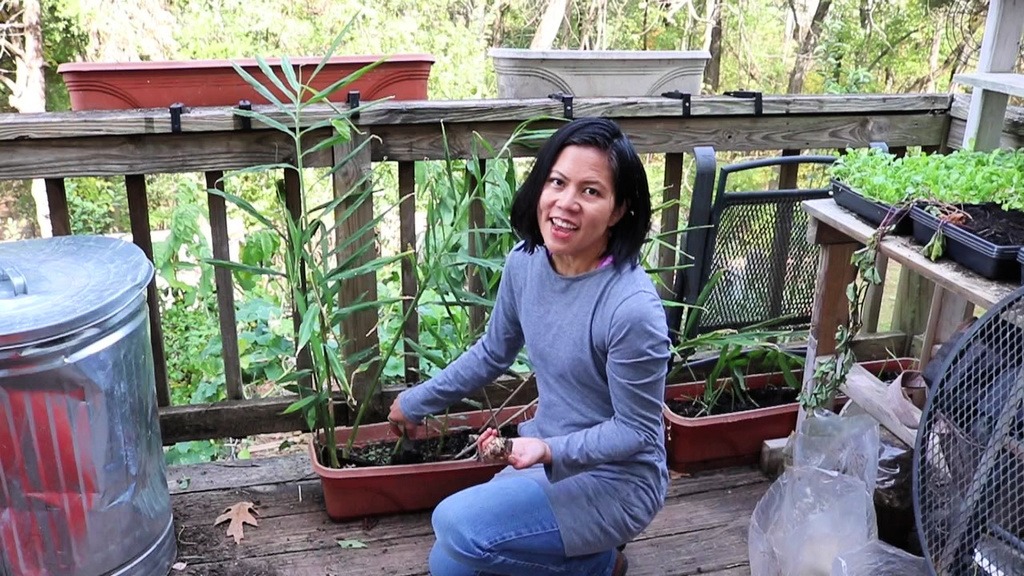
Melissa: There’s a wealth of information in those 10 steps. My garden’s primary focus used be just on food production. Then about four years ago I really started to switch that. It’s still about food production but I really wanted it to look pretty and be a place that I enjoyed being just visually, even if I wasn’t harvesting.
Nicky: I struggle with marrying being a vegetable grower and an ornamentalist. I try to make my front yard edible and beautiful at the same time because we have been cited by the HOA several times. It’s an ongoing struggle.
That’s sort of a different yield that’s more spiritual and peaceful and calming that you enjoy your yard.
Melissa: With the pandemic and shelter in place orders I’ve been spending even more time at home even though I’m typically here anyway since I work from home. We recently removed some sod to expand one of my herbal cottage garden areas because we have space, let’s maximize it. We’re also adding quite a bit more perennials this year for both food and medicine and just beauty.
You’ve mentioned you’re a garden mentor and permaculture mentor. What do you mean by that?
Dave: Grow it Yourself is our premium subscription service where we basically provide informational resources, an online community of like-minded growers, free heirloom seeds and cuttings and virtual coaching using regular Zoom calls to help people get their gardens more productive and sustainable. The idea for this service came about because Nicky used to do a lot of in-person consulting when we discovered permaculture six or seven years ago. We have six kids so it just felt like we weren’t making as much of an impact as we’d like to with the limited time that we had. We’d have to drag the kids along with us to a lot of these things. We were also doing a lot of online webinars and articles and generating a huge amount of content. So we wanted to organize it a bit to make it more structured and accessible. Our main intent with Grow It Yourself is to build an online community of like-minded individuals to create that permanent community online.
We currently have a core course that we’ve created which goes through that first spiral that we were talking about. Starts with teaching people how to start their own seeds successfully, how to choose the kinds of things that they would grow, a planting calendar, and then go through harvest in about three months. Once they complete that core course we have masterclasses to get into some of the more advanced topics like composting or integrating mushrooms into interior gardening or backyard orcharding.
Where to find Nicky & Dave
For more organic gardening tips, check out the following posts:
- What is Organic Gardening and How to Start an Organic Garden at Home
- 13 Basic Steps to Starting a Vegetable Garden
- How to Create a Gardening Plan for More Harvest and Less Stress
- 8 Common Mistakes Made by New Gardeners
- Science-Based Companion Planting Strategies for a Healthier Garden
- 11 Tips for Organic Pest Control for Vegetable Gardens
- Cabbage Moth and Slug Control with Organic Gardening Methods
- How to Get Rid of Bugs on Plants Naturally Tips that Actually Work
